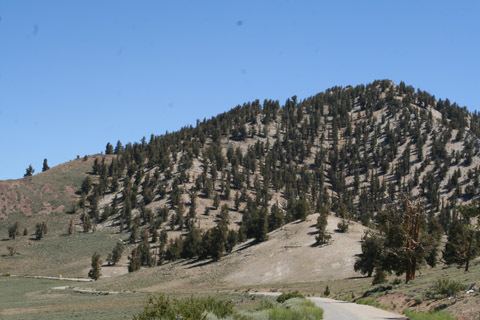Country United States Habitat loss 25-50% Bird species 160 | Protected 97.53% Mammal species 91 | |
 | ||
Biome Temperate coniferous forest | ||
The Great Basin montane forests is an ecoregion of the Temperate coniferous forests biome, as designated by the World Wildlife Fund (WWF).
Contents
Geography
The Great Basin montane forests ecoregion is located in the Great Basin region of Nevada, eastern California, and western Utah, in the Western United States.
The montane forests are often found on Madrean Sky Islands at elevations above the Great Basin Desert or xeric shrublands. The forests are within the Central or Northern Basin and Range ecoregions defined by the U.S. Environmental Protection Agency.
Species
White fir, Douglas fir, and ponderosa pines are found in the middle elevations of some mountain ranges, while limber pine, subalpine fir, Engelmann spruce, and bristlecone pines occupy the higher elevations, continuing to the upper tree line. Mountain mahogany often dominates drier, warmer south-facing slopes. Pure stands of aspen are also common in this community.
The bristlecone pine is an important species that is indicative of the Great Basin montane forest. Bristlecones live a long time, some for thousands of years. The harsh areas they occupy are often devoid of other plant life, so there is little competition and reduced risk of fire. The trees grow very slowly, producing very dense, disease-resistant wood. These factors contribute to the bristlecone’s long life. Protected areas with them include the Snake Range peaks within Great Basin National Park of Nevada and the Ancient Bristlecone Pine Forest in the White Mountains within the Inyo National Forest of California.
